Introduction
This page is representative of a whole series of others that will follow in the future. They are intended to acknowledge the invaluable dedication and contributions of many amateur impact researchers from around the world who are completely ignored, if not in some cases ridiculed, by the traditional impact research of the so-called “impact community”. Evidence and publications of newly discovered impact structures with all diagnostic impact criteria recognized in impact research are suppressed and not further cited in the literature, let alone listed in the Canadian impact database. Arguments that these peer-reviewed publications at e.g. LPSC and MetSoc Meetings have not been accepted in a “proper” journal must be countered by the fact that papers submitted there are regularly rejected by reviewers from the impact community.


Fig. 1. Location maps
We begin here with the recent impact finds and findings brought to our attention by Arnold Spitzer of Swisher near Cedar Rapids, Iowa, who initially and for more than 10 years has been studying the allochthonous and alien breccias in local sand pits and has since also inspected the impact structures of Glover Bluff, Decaturville, Weaubleau, Kenntland, Flynn Creek, and Crooked Creek. The remarkable allochthonous breccias in “his” sand pits (which, for understandable reasons – landowners! – we do not locate in detail), conventionally thought part of the glacial till, are likely to be attributed to a previously unknown impact as ejecta, now on “secondary deposit” and mixed with common rocks of glacial origin.
Suspected impact breccias from sand pits near Swisher, Iowa.
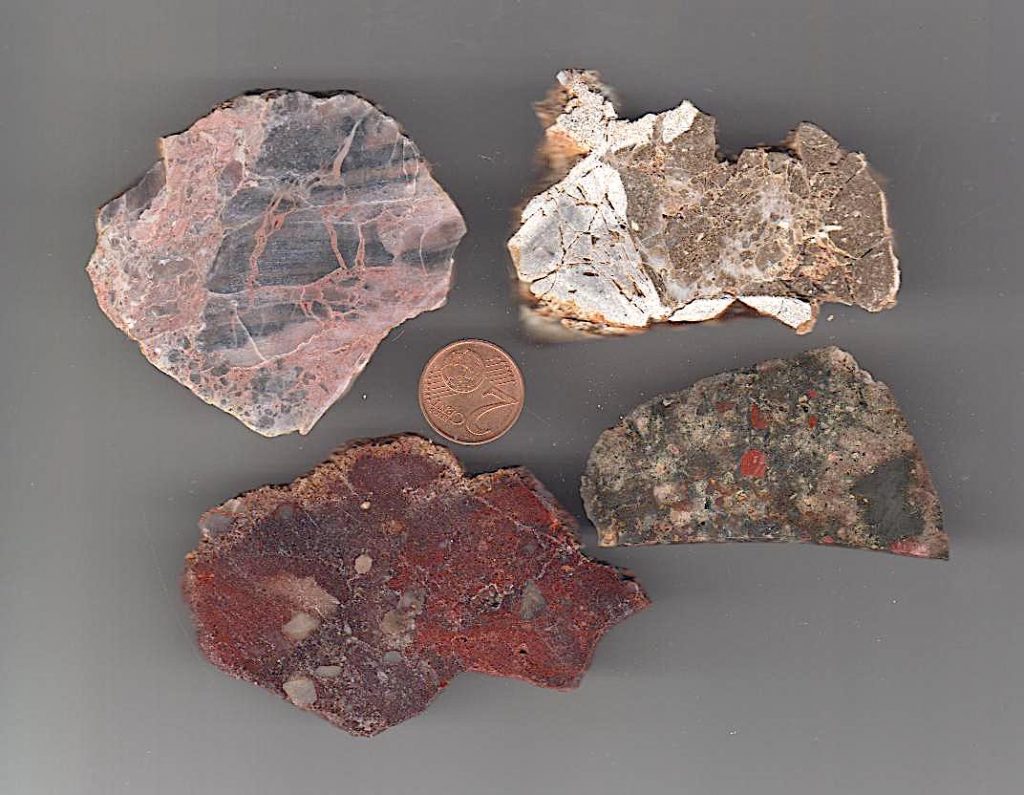
Fig. 2. Polymictic breccias from Swisher sand pits. Breccias-within-breccias (breccia generations) are a clear indication of impact brecciation. Top left: the nicely fitting however distinctly separated fragments of the grayish component prove transport and emplacement within the matrix under high confining pressure typical of impact.

Fig. 3. Polymictic breccias from Swisher sand pits. Top left and middle: monomicti breccia components in fine-grained polyymictic matrix.

Fig. 4. From Swisher sand pits: cut cobbles of polymictic breccias.

Fig. 5. More polymictic breccias from Swisher pits.
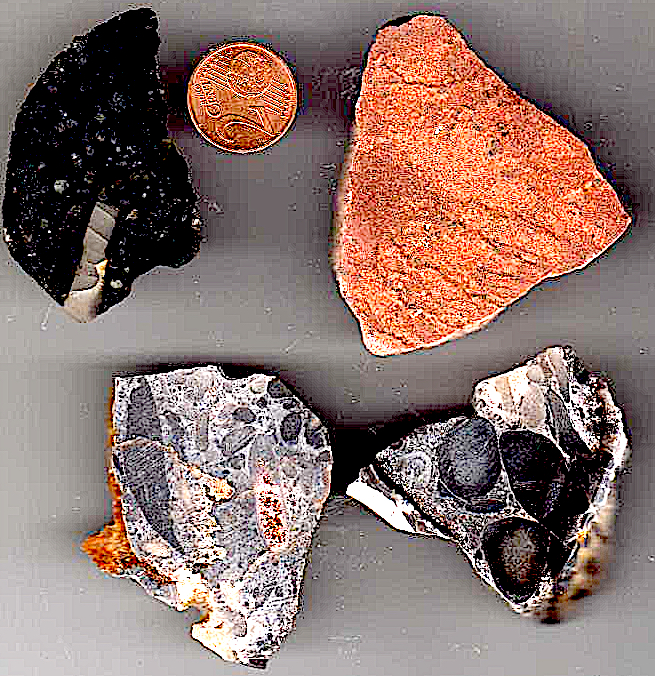
Fig. 6. More breccias from Swisher sand pits: Top right: monomictic flow breccia. Lower left: polymictic breccia with probable lapilli stone fragments. Detail lower right.

Fig. 7. Monomictic pseudo breccia: monomictic components in micro-breccia matrix.
The Decaturville impact structure
(Arnold Spitzer samples)
Breccias from within crater

Fig. 8. Polymictic breccia, breccia generatioins, breccia-within-breccia.

Fig. 9. Polymictic breccia; breccias-within-breccia.

Fig. 10. Impact melt breccia.

Fig. 11. Monomictic breccia.

Fig. 12. Polymictic breccia.
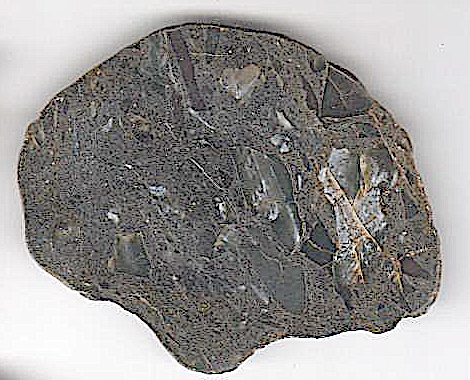
Fig. 13. Breccia cobble. Polymictic breccia with flow texture; adjusted components. Field width 8 cm.

Fig. 14. Polymictic micro breccia. Field width 8 cm.

Fig. 15. Monomictic pseudo breccia: monomictic components in polymictic micro breccia.

Fig. 16. Impact melt breccia.

Fig. 17. Spectacular monomictic flow breccia: breccia components strung like pearl strings. Indication of high confining pressure during transport and embedding.
Breccias from the ejecta blanket
Comment by Arnold:
The common wisdom seems to be that the Decaturville ejecta blanket eroded away millions of years ago, so it seems odd that a guy like me would find convincing impact material 2 radii outside the established rim. Could it be that none of the experts bothered to look?

Fig. 18. Monomictic flow breccia.
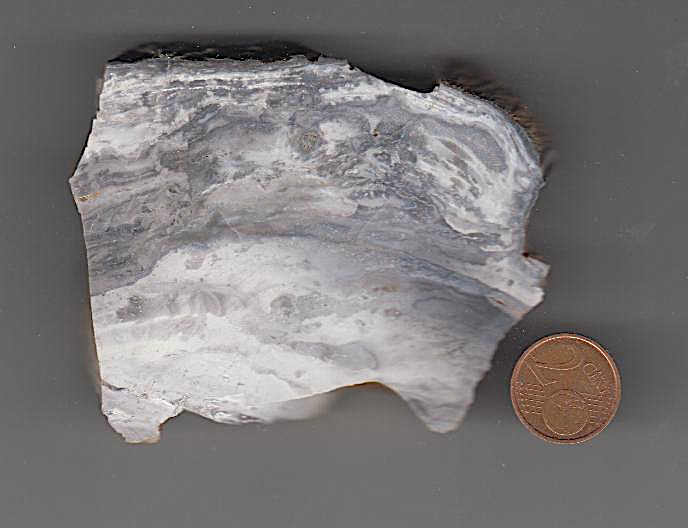
Fig. 19. Melt rock.

Fig. 20. Melt (?) breccia.

Fig. 21. Lapilli stone.
Glover Bluff impact structure
Comment by Arnold:
During my brief visit to Glover Bluff, I made a point of picking up a couple of float rocks that looked different from the typical impact material. One of them was the (pegmatitic?) slice seen below (Fig. 23). As far as I recall, the limited literature on Glover Bluff offers only shatter cones as convincing impact evidence. To my untrained eye, just the mica in that rock looked suspicious. Should this rock indeed contain PDFs (also see Fig. 23, would it be more reasonable to assume it originated where it was found (even though it looks different), or that it was coincidentaly deposited there from some other unknown impact?
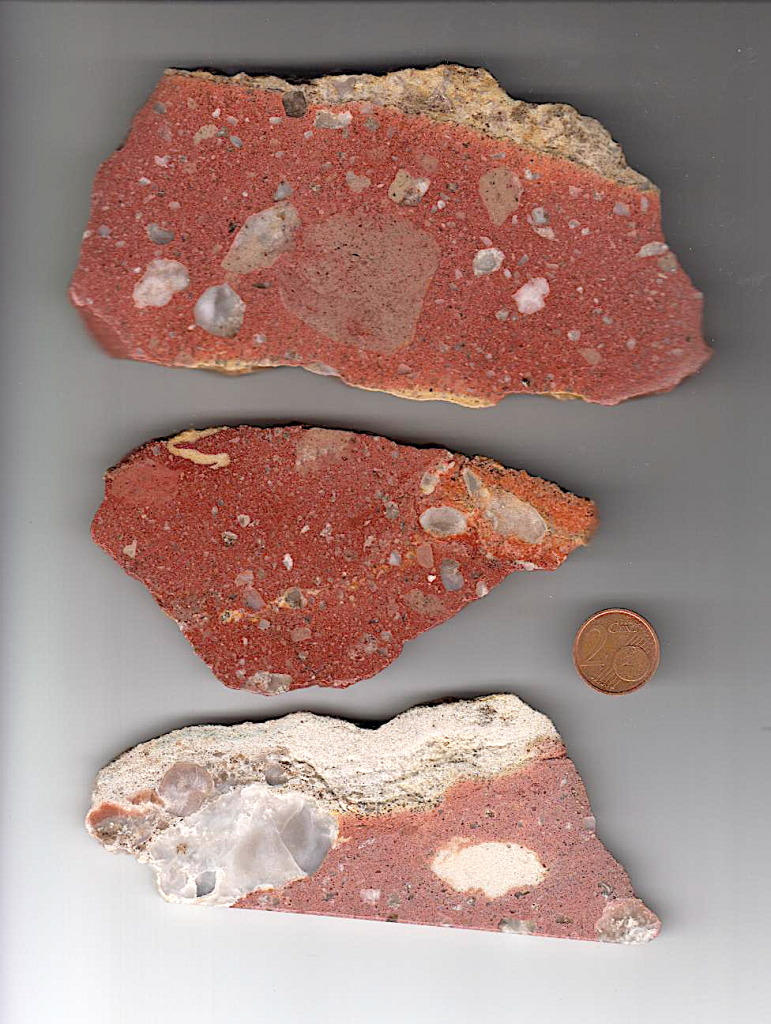
Fig. 22. Typical Glover Bluff polymictic breccia: reddish and yellowish variety in contact (top and bottom).

Fig. 23. Shocked polymictic breccia. All quartz grains with planar features; micas strongly kinked.

Fig. 24. Polymictic breccia component wrapped round by a polymictic micro breccia.
Crooked Creek impact structure
Arnold Spitzer sample
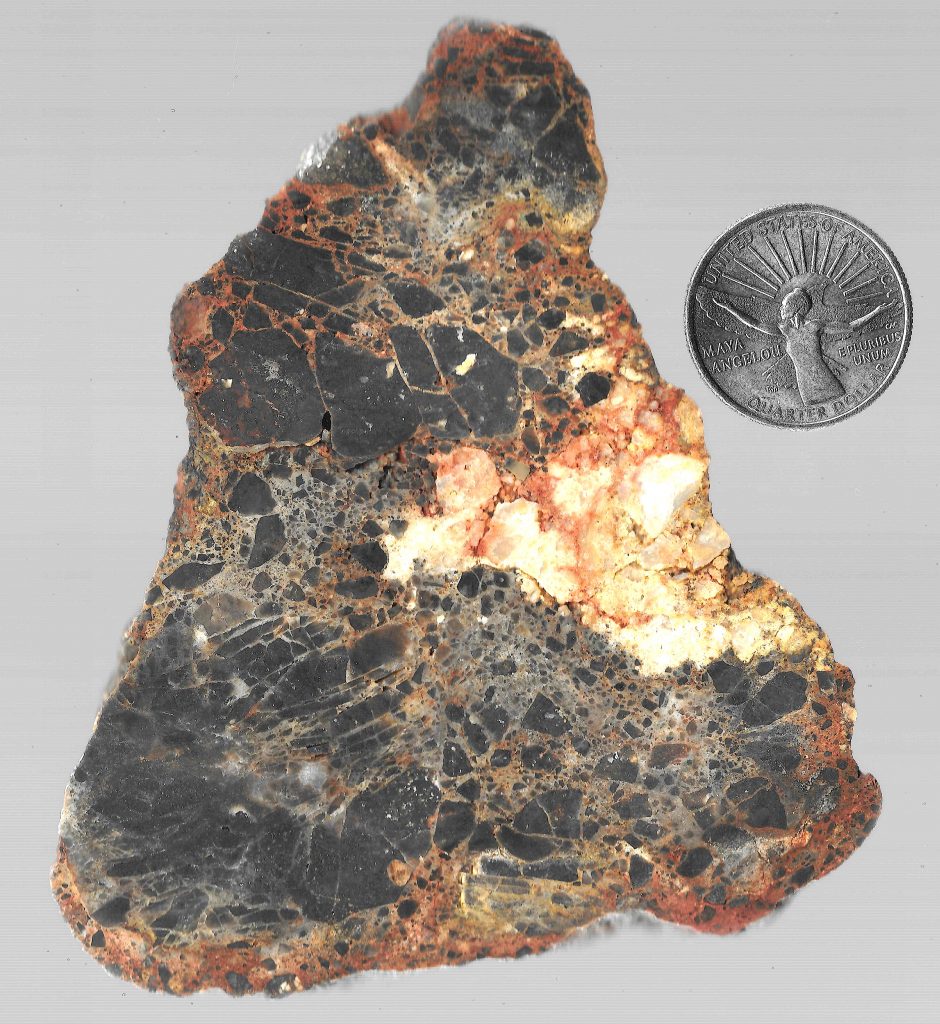
Fig. 25. Crooked Creek polymictic impact breccia with multiple breccia generations.






































































